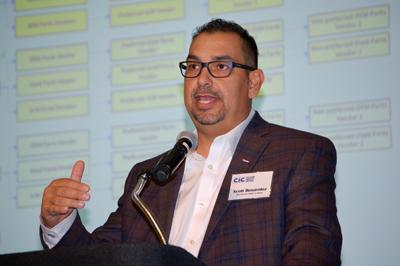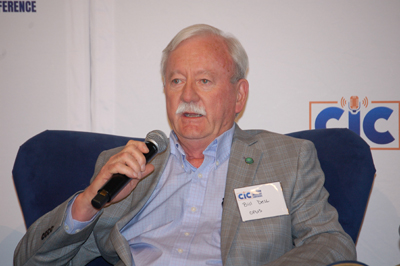About 15 states currently have some sort of periodic safety inspection for vehicles, but with drivers increasingly reliant on ADAS features, those existing state programs likely need to evolve---and more states are likely to want to find ways to ensure driver assistance features are functioning properly.
That was the consensus among panelists at a discussion during a recent Collision Industry Conference (CIC).
“With the advent of more semi-autonomous vehicles, automatic driving features, in my opinion this is going to come to pass at some point,” said Chuck Olsen of AirPro Diagnostics. “This is going to have to be addressed for the safety of the motoring public. In my opinion, we need to be involved as an industry so that we make sure it is done right, not just have legislation coming at us that isn’t correct.”
Olsen said having spent much of his career on the mechanical side of the industry, he thinks “collision shops are better equipped to perform a periodic type of inspection than the classical mechanical shop.”
New Study Fuels Interest
Bill Dell of Opus Inspections said required vehicle inspections---whether for safety or emissions---can be a challenge to get enacted because they can be viewed as a new tax or a politically unpopular mandate. But a new study released this past fall by Carnegie Mellon University may help change that.
Dell---who disclosed that his company was one of the sponsors of the three-year, peer-reviewed study---said the study looked at 44 years of accident data, comparing states with vehicle safety inspections to those without. It found the states with such programs experienced a 5.5% lower rate of vehicle fatalities.
“That may not sound like very much, but there’s 30,000 fatal crashes every year in the United States, so that means 1,400 passenger lives per year could be saved,” Dell said. “That’s the equivalent of a few airplane crashes. We’re using this information to try to educate policymakers and legislators around the country. And we’re having some success. I think we’re seeing movement in states taking a new interest for the first time in decades.”
Rather than a patchwork of programs that vary widely by state, Dell said he’d prefer the National Highway Traffic Safety Administration develop national standards or guidelines for the programs, and there are efforts under way to get federal funding and a mandate for NHTSA to at least study the issue.
“Barring that, I think what you will see is leadership from a few states that will help others come along,” Dell said.
Shop Owner Conducts Inspections
Another panelist at CIC, New Mexico shop owner Scott Benavidez, has some experience conducting a state-mandated vehicle safety inspection. Since 2016, New Mexico has required anyone selling a used vehicle to disclose if that vehicle has sustained damage exceeding 6% of its value. Benavidez said he has about a half dozen inspectors looking at more than 7,000 used vehicles a year, primarily for used car dealers.

“We rewrite an estimate based on how much damage we think it had, and if there’s any safety-related issues to it,” Benavidez said. “Then they can disclose that, so the consumer knows what they’re buying, or about 90% of the time, the [dealer] gets [safety issues] fixed. It’s interesting what we find. It could be something as simple as someone [who repaired a vehicle] not putting a [bumper] absorber back in. We see that a lot.”
Benavidez said used car dealers hated the program at first because almost every vehicle was failing the safety test.
“But they have gotten smarter about what to look for in the vehicles they are buying to sell,” he said of the dealers. “Fast forward to today, and we don’t see as many safety issues as we did when we first started this. The dealers are now excited about the law. They like what it does for their product and for the consumer. Consumers like it because they know exactly what they’re buying.”
Inspections Could Improve Repairs
Another panelist, Mark Olson of VECO Experts, agreed with others that, given the importance of maintaining the functionality of ADAS, he foresees more states conducting periodic vehicle safety inspections in the future.
“In the next 10 years, annual inspection of safety systems on cars is going to become very real,” Olson said. “In my opinion, we’re not going to escape it.”
Regulators will start to recognize, he said, that less safe vehicles are being brought into states without such programs by those who know those vehicles will fail the inspection required in their current state.
“If they know it’s not going to pass in New Mexico, they’re going to kick it off to Idaho or Montana where there isn’t an inspection,” Olson said, saying he sees a similar shift in vehicles that can’t pass an emission test into states without such tests. “That’s why having a nationwide scenario might be a really good idea. I’m not saying I’m in favor of the government doing anything. But it may take that.”
Regular safety inspections could also help ferret out incomplete or poor quality collision repair work, Olson said.
“If you can’t get the vehicle tags renewed without passing, that would actually bring the level up in our industry,” he said.















John Yoswick